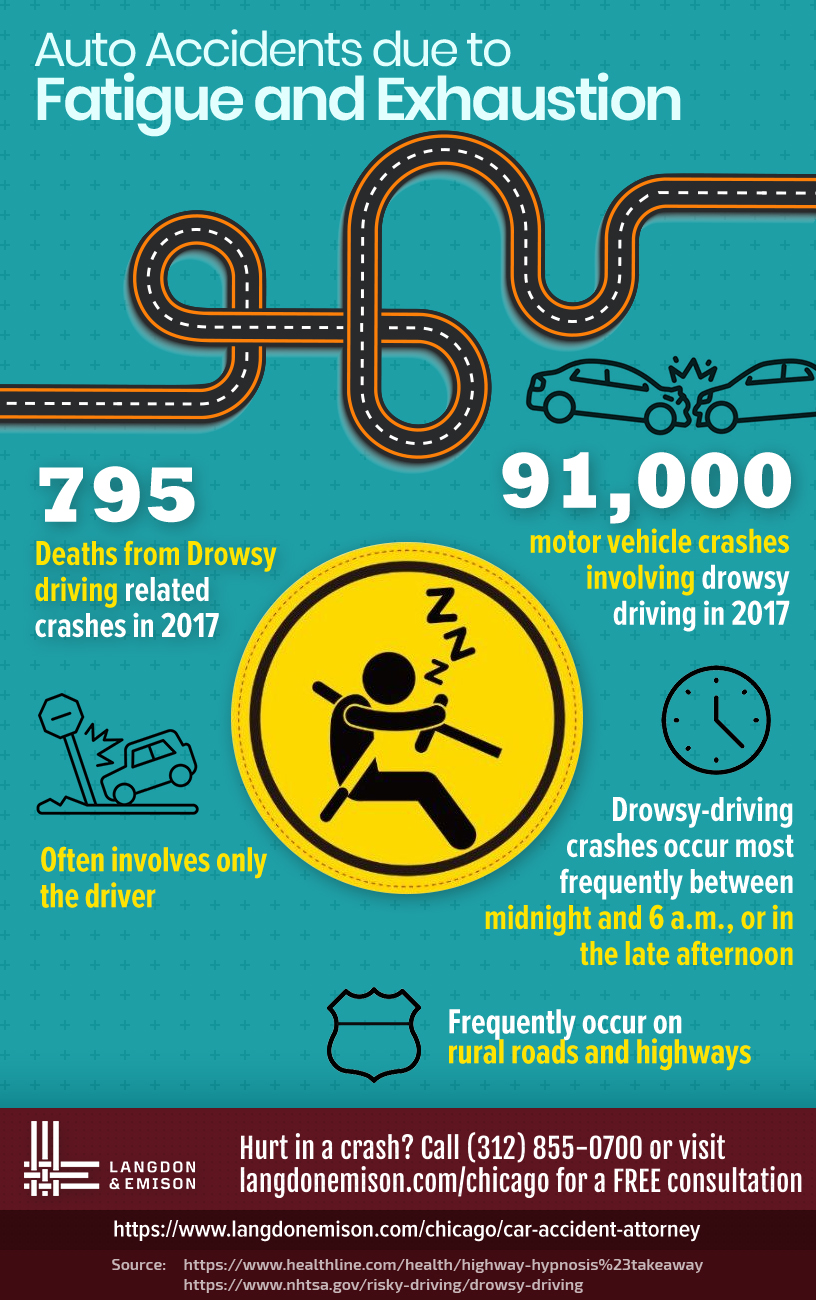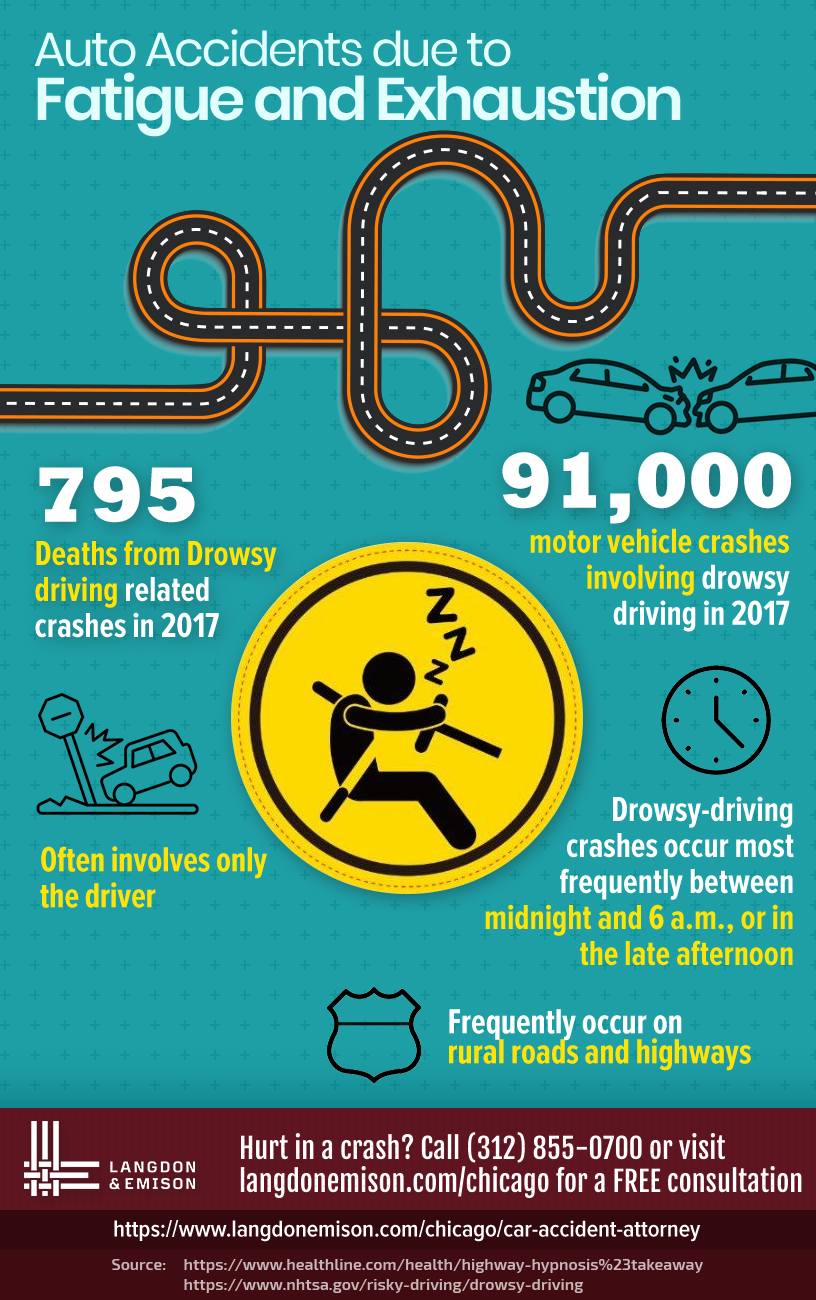
Whether for business or pleasure, a lot of people have driven through the night at some point. Unfortunately, many people have also been involved in car accidents where one of the drivers fell asleep at the wheel.
Driver fatigue is more widespread than many realize. Although it’s just as dangerous as drunk or distracted driving, it’s not talked about as often. It’s also harder to prove after an accident. This is why it’s especially important to know the causes and symptoms of driver fatigue.
What are the main causes of driver fatigue?
There’s always a reason why someone fell asleep at the wheel. Know the causes of driver fatigue and exhaustion so you can avoid them:
- Not taking breaks
- Failure to stay stimulated while behind the wheel
- Driving in the dark
- Getting behind the wheel while already sleepy
- Sleep apnea
- Insomnia
- Driving alone for long periods of time
These underlying conditions are dangerous to not only the tired driver but everyone else on the road. In fact, according to the National Highway Traffic Safety Administration, there were over 91,000 motor vehicle crashes involving drowsy driving in 2017.
Drowsy driving car accidents are most likely to occur between midnight and 6 am and on rural roads and highways. While these factors can diminish the likelihood of injuring other parties, there’s still a high degree of risk to anyone who may be driving or walking near an exhausted driver.
Effects of Driver Fatigue
Whether you’re behind the wheel, in the passenger seat, or driving behind another vehicle late at night, it’s helpful to know the signs of driver fatigue.
Driver exhaustion may appear as one or more of the following effects:
- Swerving in and out of a lane
- Falling asleep at the wheel
- Nodding off repeatedly
- Blurry vision
- Delayed reaction time
- Weakened alertness
- Cloudy judgment
- Diminished judgment
Many of these effects are similar to drunk driving and all of them can lead to a serious, and even fatal, car accident. Drowsy drivers have been known to run through stop signs or red lights, drive headfirst into oncoming traffic, or drive straight off the road.
How to Combat Driver Fatigue and Exhaustion
Many drivers and truckers make the mistake of believing they can combat driver fatigue with short-term remedies. However, no matter how much coffee a driver drinks, how loudly they blast the radio, or if they roll down the window, these actions can’t make up for a lack of sleep.
To avoid a potentially devastating accident on the road, tired drivers should take some preemptive steps to avoid driver fatigue:
- Drive with another person if possible and take turns behind the wheel
- Get a good night of sleep before a long drive
- Take breaks to walk around and stretch
- Keep the mind alert by listening to an interesting podcast or audiobook
- Stay on well-lit and busy roads if possible
- Give yourself more than enough time to reach the destination
At worst, drivers who take these precautionary measures but still find themselves nodding off behind the wheel should park their car somewhere safe. Nothing is worth falling asleep at the wheel and seriously injuring another person or yourself.
Were you injured by someone who fell asleep at the wheel?
All too often, innocent victims are injured by exhausted drivers who fell asleep behind the wheel. What’s worse is that these accidents never had to happen in the first place. Langdon & Emison’s experienced Chicago, IL personal injury lawyers can help accident victims seek compensation for their injuries.
If you were victimized by a fatigued driver, it’s important to know that you have options. Call our office today at (866) 931-2115 to schedule a risk-free case evaluation.



